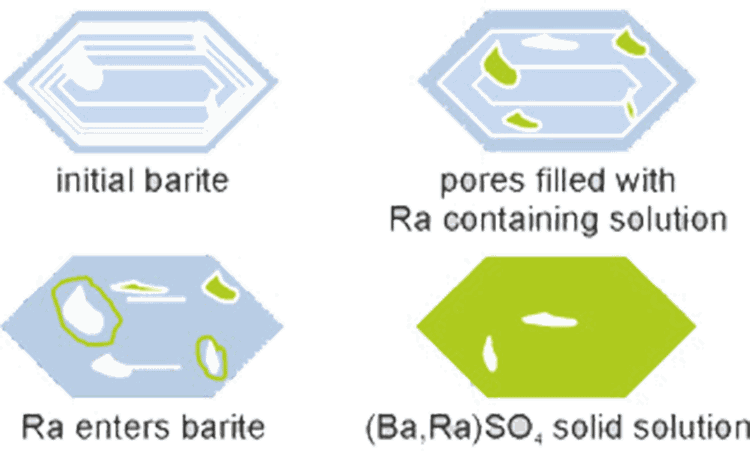Retention of 226Ra by barite
September 2017
by Juliane Weber, Juri Barthel, Martina Klinkenberg, Dirk Bosbach, Maximilian Kruth, and Felix Brandt
The role of internal macropores and nano-scale pores for the uptake of 226Ra into barite was studied via scanning and transmission electron microscopy as well as focused ion beam methods. A temporal evolution of the internal microstructure and the Ra distribution was observed on samples taken from long-term Ra uptake experiments.

The results of this study clearly show a significant impact of the presence of Ra leading to a complete reconstruction of the internal barite microstructure, whereas the microstructure of Ra-free reference samples remained unchanged. The initial internal barite microstructure contains a connected network of macropores and a layered structure of nano-scale pores which, in the presence of Ra, coalesced in favor of larger pores during the experiment.
A clear relationship between the Ra uptake and the internal porosity was observed by high-resolution STEM-EDX mappings. Starting from strongly enhanced Ra concentrations in the solid in the vicinity of the pores, Ra is temporarily inhomogeneously distributed within the barite particles. At later stages of the long-term experiment the Ra distribution becomes homogenous while nano-scale and macro-scale pores disappear. In conclusion, the uptake of Ra into barite takes place by a special case of dissolution/reprecipitation from the inside of the particle to the outside.
Further reading:
Juliane Weber, Juri Barthel, Martina Klinkenberg, Dirk Bosbach, Maximilian Kruth, and Felix Brandt: Retention of 226Ra by barite: The role of internal porosity,
Chemical Geology 466 (2017) 722-732.
